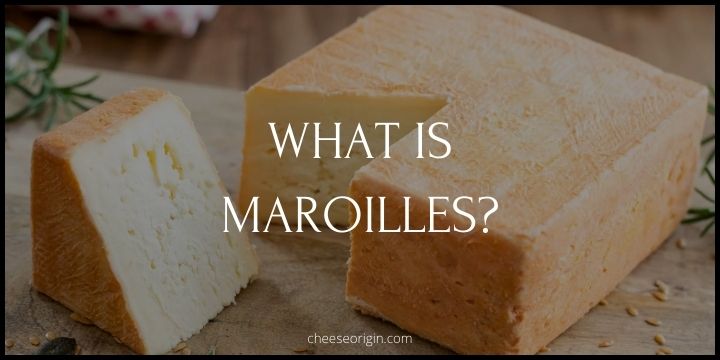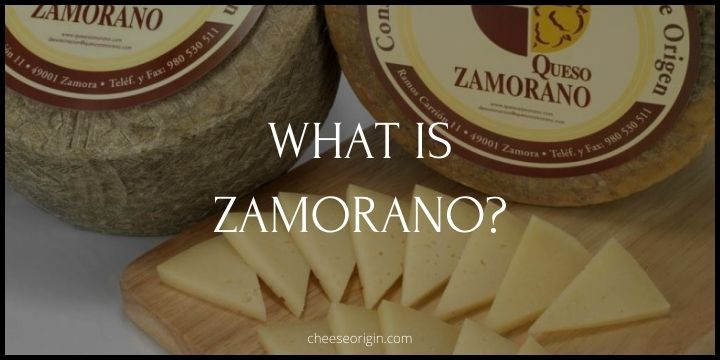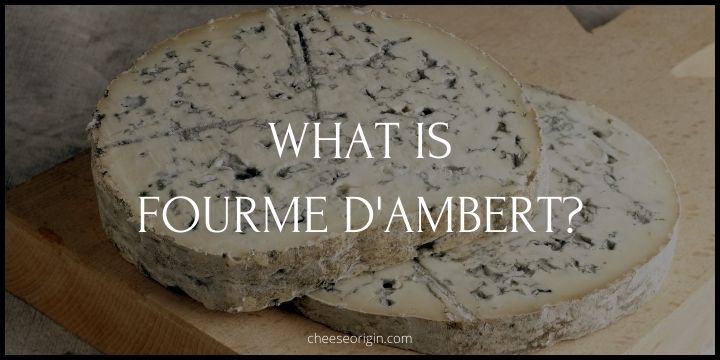What is Fromage Frais? A French Culinary Gem Explained

Often mistaken for yogurt or dismissed as just another type of cheese, Fromage Frais is a culinary gem that deserves its own spotlight. With its creamy texture, mild tanginess, and versatility in both sweet and savory dishes, it’s an unsung hero in the culinary world.
But what exactly is Fromage Frais? How does it differ from similar dairy products? And most importantly, how can you best enjoy this French delicacy? Let’s dive into the delicious world of Fromage Frais and discover the answers to these questions. Bon appétit!
Quick Facts About Fromage Frais
| Fact Category | Details |
|---|---|
| Origin | France |
| Type | Fresh Cheese |
| Texture | Creamy and Smooth |
| Flavor | Mild, slightly tangy |
| Fat Content | Varies, can be full-fat or low-fat |
| Fermentation Time | Brief, usually 6-12 hours |
| Main Ingredients | Cow’s milk, sometimes goat’s milk, and lactic starters |
| Serving Suggestions | Often served with fruit or used in desserts, can also be used in cooking as a substitute for cream |
| Nutrition | High in protein and calcium, low in fat (if low-fat version) |
| Shelf Life | Short, needs to be consumed within a few days of production |
| Storage | Refrigerated |
| Popular Brands | Petit Suisse, Gervais |
| Health Benefits | Good source of probiotics due to the fermentation process |
| Variants | Fromage blanc is a similar cheese but has no cream added, while fromage frais does |
| Availability | Widely available in France, but can be found in specialty food stores worldwide |
| Use in Recipes | Used in cheesecakes, dips, spreads, baking, and more |
| Unique Feature | Unlike most cheeses, fromage frais is not aged. |
What is Fromage Frais?
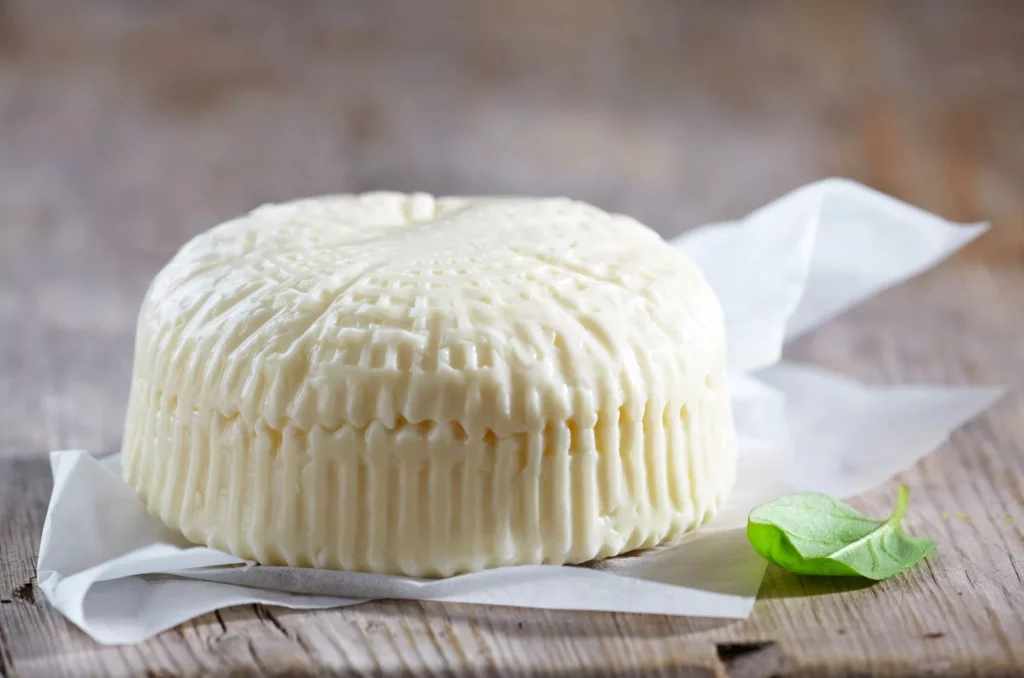
Fromage Frais, a name originating from the French language and translating to ‘fresh cheese’, is a dairy delight that has been charming the taste buds of cheese enthusiasts for centuries. This French culinary gem has a unique place in the world of cheese, offering a delightful combination of creaminess, freshness, and subtle tanginess.
Unlike most cheeses that are aged, Fromage Frais is enjoyed fresh, typically within a few days of production. It’s made using cow’s or sometimes goat’s milk and lactic starters, resulting in a brief fermentation process that usually lasts between 6 to 12 hours. The result? A rich, creamy cheese with a texture similar to yogurt, but with a distinctive cheese flavor.
The beauty of Fromage Frais lies not only in its taste but also in its versatility. Its mild flavor makes it a perfect companion for fresh fruits, turning a simple dessert into a gourmet experience. Moreover, it’s widely used in an array of recipes, from creamy dips and spreads to exquisite cheesecakes and pastries. It can even be used as a healthier substitute for cream in cooking, adding a smooth, velvety touch to dishes.
Nutritionally speaking, Fromage Frais is a powerhouse. It’s high in protein and calcium, and if you opt for the low-fat version, it’s a great option for health-conscious individuals. Plus, due to its fermentation process, it’s a good source of probiotics, promoting a healthy gut.
In summary, Fromage Frais is more than just a cheese. It’s a gastronomic adventure that takes you on a journey through the rich, diverse landscape of French cuisine. Whether you savor it on its own, pair it with fruit, or incorporate it into your favorite recipes, Fromage Frais is sure to bring a touch of French elegance to your table.
What Does Fromage Frais Taste Like?
Fromage Frais is celebrated for its unique, mild flavor. It has a fresh and slightly tangy taste, with a hint of sweetness. The flavor profile is often compared to that of yogurt, but it’s more complex due to the cheese-making process.
The texture of Fromage Frais is smooth and creamy, similar to cream cheese but lighter. Its consistency can range from thick and spreadable to pourable, depending on the fat content. The full-fat version tends to be richer and creamier, while the low-fat or fat-free versions are more tart and have a lighter texture.
It’s important to note that the flavor of Fromage Frais can vary slightly depending on factors such as the type of milk used (cow’s or goat’s milk), the specific strains of lactic acid bacteria used in the fermentation process, and whether or not cream has been added.
The truth is that Fromage Frais offers a delightful blend of freshness, creaminess, and slight tanginess, making it a versatile addition to many dishes and a delicious treat on its own.
Fromage Frais Tasting Notes
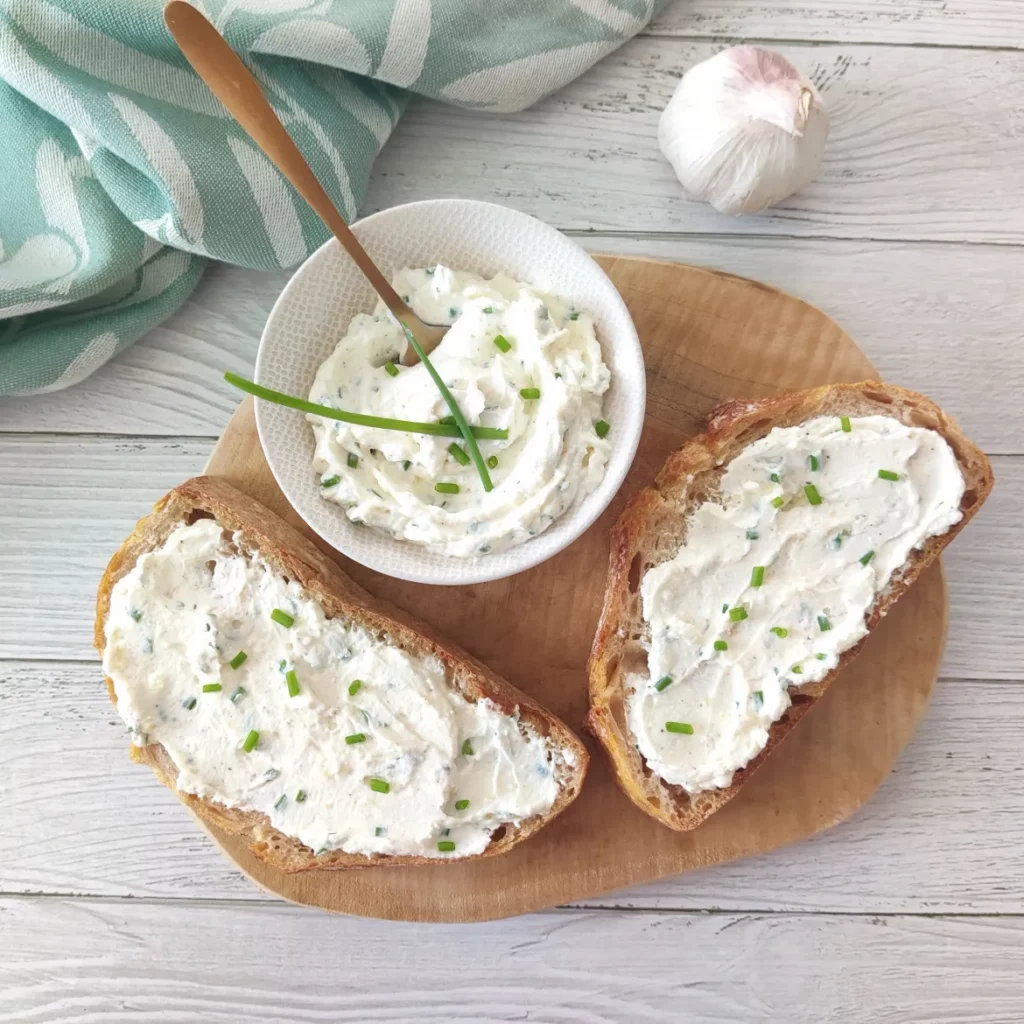
- Appearance: Fromage Frais is typically a pristine white cheese with a smooth, glossy surface. Depending on its fat content, it can have a spreadable to pourable consistency.
- Aroma: The scent of Fromage Frais is fresh and subtly milky. Unlike many aged cheeses, it doesn’t carry a strong or pungent smell.
- Taste: The flavor profile of Fromage Frais is mild with a slight tanginess. There’s a gentle hint of sweetness, and the fresh, clean taste is similar to yogurt but carries the complexity of cheese. The full-fat versions tend to be richer and creamier, while the low-fat or fat-free versions lean more towards tartness.
- Texture: Fromage Frais has a velvety, creamy texture that is lighter and smoother than cream cheese. Its thickness varies from being spreadable to more pourable.
- Aftertaste: The aftertaste of Fromage Frais is refreshing and clean. It leaves a lingering tanginess that prompts you to take another bite and a smooth, creamy sensation in the mouth.
- Pairing Suggestions: Fromage Frais is versatile in its pairings. For a sweet indulgence, it pairs well with fresh fruits, honey, and granola. On the savory side, it complements flavors like herbs, garlic, and smoked salmon beautifully. In cooking, it can be used as a substitute for cream or incorporated into various recipes for a smooth, velvety touch.
How to Eat Fromage Frais?
Fromage Frais is a versatile food item that can be enjoyed in numerous ways:
- As a dessert or snack: Fromage Frais can be enjoyed straight from the pot as a dessert or a healthy snack. You can add honey, jam, or fresh fruits like berries for added flavor and sweetness.
- In breakfast dishes: It can be used as a topping for granola, muesli, or oatmeal. You could also spread it on your morning toast with a drizzle of honey or a sprinkle of chia seeds.
- As a dip or spread: Mix Fromage Frais with herbs, garlic, lemon zest, or spices to create a flavorful dip for crudites or a spread for crackers or bread.
- In savory dishes: Fromage Frais can be used in cooking as well. It’s great in pasta sauces, quiches, or as a topping for baked potatoes. It can also be mixed with herbs and stuffed into chicken breasts or used as a base for a creamy salad dressing.
- In baking: Fromage Frais can be used as a substitute for cream or yogurt in baking recipes. It can add a moist, tender crumb to cakes and muffins.
- In cold soups: Blend Fromage Frais with vegetables like cucumber or avocado to create a refreshing cold soup.
What is the Difference Between Fromage Frais and Yogurt?
Fromage Frais and Yogurt are both dairy products and are often used interchangeably in recipes due to their similar textures. However, they do have some key differences:
| Criteria | Fromage Frais | Yogurt |
|---|---|---|
| Preparation | Made from milk that’s heated and has harmless bacteria added to it. It is not fermented. | Made by fermenting milk with live bacteria cultures. |
| Protein Content | Typically higher protein content. | Lower protein content compared to Fromage Frais. |
| Taste and Texture | Has a smooth and creamy texture with a mild and slightly tangy flavor. | Texture can range from thick and creamy to thin and runny. Flavor is typically more tart. |
| Sugar Content | Some versions contain added sugars, fructose syrup, fruit from concentrate, and glucose syrup, along with naturally occurring lactose. | Contains naturally occurring lactose. Some flavored versions may have added sugars. |
| Nutrition | Fromage Blanc, a type of Fromage Frais, is generally considered more nutritious. | Beneficial to intestinal health. |
Is Fromage Frais a Healthy Cheese?
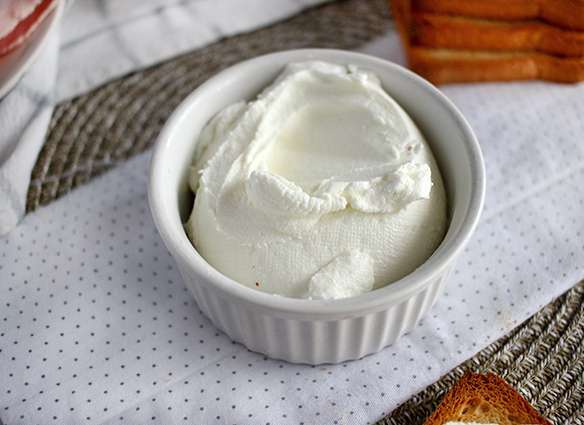
Fromage Frais is often considered a healthy cheese for these 3 reasons:
- Low Fat: Pure Fromage Frais is virtually fat-free. However, cream is frequently added to improve the flavor, which can increase the fat content, frequently to as high as 8%. Depending on the version you buy, you can get 99.9% fat-free, 1% fat, or 8% fat.
- High Protein: Fromage Frais has fewer calories and more protein than most Greek yogurts, making it a good choice for those who are looking to increase their protein intake.
- Rich in Vitamins and Minerals: It’s full of calcium, vitamin B12, and protein, the latter of which accounts for over 70% of its calories. Both Fromage Frais and yogurt are made using milk, making them rich sources of calcium which is essential for dental health.
Fromage Frais Nutrition Facts
| Nutrient | Amount: 1 pot (100g) |
|---|---|
| Calories | 75 |
| Calories from Fat | 28.8 (38.4%) |
| Total Fat | 0g – 2.9g* |
| Saturated Fat | 1.9g* |
| Sodium | 80mg – 2300mg* |
| Potassium | 280mg* |
| Total Carbohydrates | 1.4g* |
| Protein | 2.6g – 66g* |
| Vitamin B2 (Riboflavin) | 0.16mg (13% of RDA/RI) |
| Phosphorus | 98.4mg (15% of RDA/RI) |
What is Fromage Frais Made of?
| Ingredients | Description |
|---|---|
| Milk | This is the primary ingredient in Fromage Frais. It can be made from cow’s milk, sheep’s milk, or goat’s milk. |
| Starter Culture | This is a combination of bacteria that kickstarts the fermentation process. |
| Rennet | This is an enzyme used to coagulate the milk and turn it into curds. |
| Cream | Some versions of Fromage Frais include cream to improve the flavor and texture. |
| Salt | This is used for flavoring. |
How is Fromage Frais Made?
- Milk Selection: Choose the type of milk to be used. It can be cow’s, goat’s, or sheep’s milk.
- Heat the Milk: The milk is heated to a specific temperature, typically around 30-37°C (86-98.6°F), to prepare it for the addition of the starter culture.
- Add Starter Culture: A starter culture, which is a mixture of bacteria, is added to the milk. This begins the fermentation process where the bacteria convert the lactose in the milk into lactic acid.
- Add Rennet: Rennet, an enzyme, is then added to coagulate the milk. This separates the milk into solid curds and liquid whey.
- Cut and Cook the Curds: The curds are cut into small pieces and then gently cooked to release more whey.
- Drain the Whey: The curds are drained to remove as much whey as possible, resulting in a thick, creamy cheese.
- Add Cream (optional): Some versions of Fromage Frais have cream added at this stage to make the cheese richer and creamier.
- Seasoning: The cheese is then seasoned, typically with a bit of salt, before being packaged and sold.
Note: this is a simplified version of the process and the exact steps can vary depending on the specific recipe and type of Fromage Frais being made.
10 Best Fromage Frais Substitutes
| Substitute | Why It Works |
|---|---|
| Greek Yogurt | Greek yogurt has a similar texture to Fromage Frais and can be used as a healthier alternative due to its high protein and lower fat content. |
| Sour Cream | Sour cream can be used in recipes that require a tangy flavor. It’s creamy and rich like Fromage Frais, although it has a higher fat content. |
| Cottage Cheese | Cottage cheese has a similar mild flavor. It can be blended to achieve a texture closer to Fromage Frais. |
| Cream Cheese | Cream cheese is thicker and richer but can be thinned down with a bit of milk or cream to reach a similar consistency to Fromage Frais. |
| Quark | Quark is a type of fresh cheese with a similar texture to Fromage Frais. It’s low in fat and high in protein. |
| Crème Fraîche | Crème Fraîche has a similar tangy flavor and creamy texture. However, it’s richer and has a higher fat content. |
| Ricotta Cheese | Ricotta has a similar texture but is slightly sweeter. It can be used in both sweet and savory recipes. |
| Farmer’s Cheese | Farmer’s cheese is a good substitute for Fromage Frais due to its similar creamy texture and mild, slightly tangy flavor. |
| Mascarpone | Mascarpone is creamier and richer, but when used in small amounts, it can mimic the creaminess of Fromage Frais. |
| Kefir | Kefir is a fermented milk drink with a similar tangy flavor. It’s thinner but can be used in recipes that require a pourable consistency. |
What Pairs Well With Fromage Frais?

Food that goes well with Fromage Frais:
| Category | Food | Why It Works |
|---|---|---|
| Bread & Pastries | Tomato and Goat Cheese Tart, Goat Cheese Babka | The tart, tangy flavors and textures of these breads and pastries work well with the mild and creamy Fromage Frais. |
| Pizzas | Ratatouille Pizza | The mixture of vegetables and the tangy tomato sauce on the pizza complement the creaminess and mild flavor of Fromage Frais. |
| Seafood | Smoked Cod Terrine, Smoked Salmon | The smoky flavor of the cod and salmon pairs well with the mild and creamy Fromage Frais. |
| Vegetables | Dill, Cornichons | These vegetables create a flavor profile that complements the mildness of Fromage Frais. |
| Meats | Sausages | The savory flavor of sausages pairs well with the creaminess of Fromage Frais, making it a good addition to sausage dishes. |
| Sweets & Desserts | Honey, Fresh Fruit Purée, Apple Fool | Sweet toppings like honey or fruit purée can contrast nicely with the mild and slightly tangy flavor of Fromage Frais. The sweet and tart flavor of the apples in Apple Fool pairs well with the creamy Fromage Frais. |
| Fruits | Strawberries | The sweetness of strawberries complements the mildness of Fromage Frais. |
| Pasta & Grains | Mushroom Pasta | The earthy flavor of mushrooms in a pasta dish works well with the creamy and mild Fromage Frais used as a sauce substitute. |
Also read: 11 Best Crackers that Pair Well with Cheese
Beverage that goes well with Fromage Frais:
| Category | Beverage | Why It Works |
|---|---|---|
| White Wine | Sauvignon Blanc, Chardonnay | The crisp, light flavors of these wines complement the creamy and mild flavor of Fromage Frais. They don’t overpower the cheese but enhance its subtle flavors. |
| Red Wine | Pinot Noir | Lighter reds like Pinot Noir can balance the creaminess of Fromage Frais without overwhelming its delicate flavor. |
| Sparkling Wine | Prosecco, Champagne | The bubbles and acidity in these sparkling wines cut through the creaminess of the cheese, making for a refreshing pairing. |
| Beer | Wheat Beer, Belgian Ale | The light, fruity notes in these beers work well with the creamy and mild Fromage Frais. |
| Non-Alcoholic | Apple Juice, Pear Juice | The sweetness and acidity in these fruit juices can balance out the richness of Fromage Frais. |
| Tea | Green Tea, Herbal Tea | The light and refreshing flavors of these teas can cleanse the palate after eating creamy Fromage Frais. |
Also read: Best Wine and Cheese Pairings: The Ultimate Guide
Frequently Asked Questions
Also read:
- What is Ouleout? A Tale of Taste and Turmoil
- What is Hooligan Cheese? The Bold and the Beautiful
- What is Vieux Boulogne? The Aromatic Adventure of the World’s Smelliest Cheese
- What is Pouligny-Saint-Pierre? A Taste of Central France in Every Bite
- What is Rocamadour Cheese? A Bite-Sized Wonder of French Gastronomy
- What is Selles-sur-Cher? A Taste of France’s Artisanal Heritage
- What is Crottin de Chavignol? The Jewel of the Loire Valley

